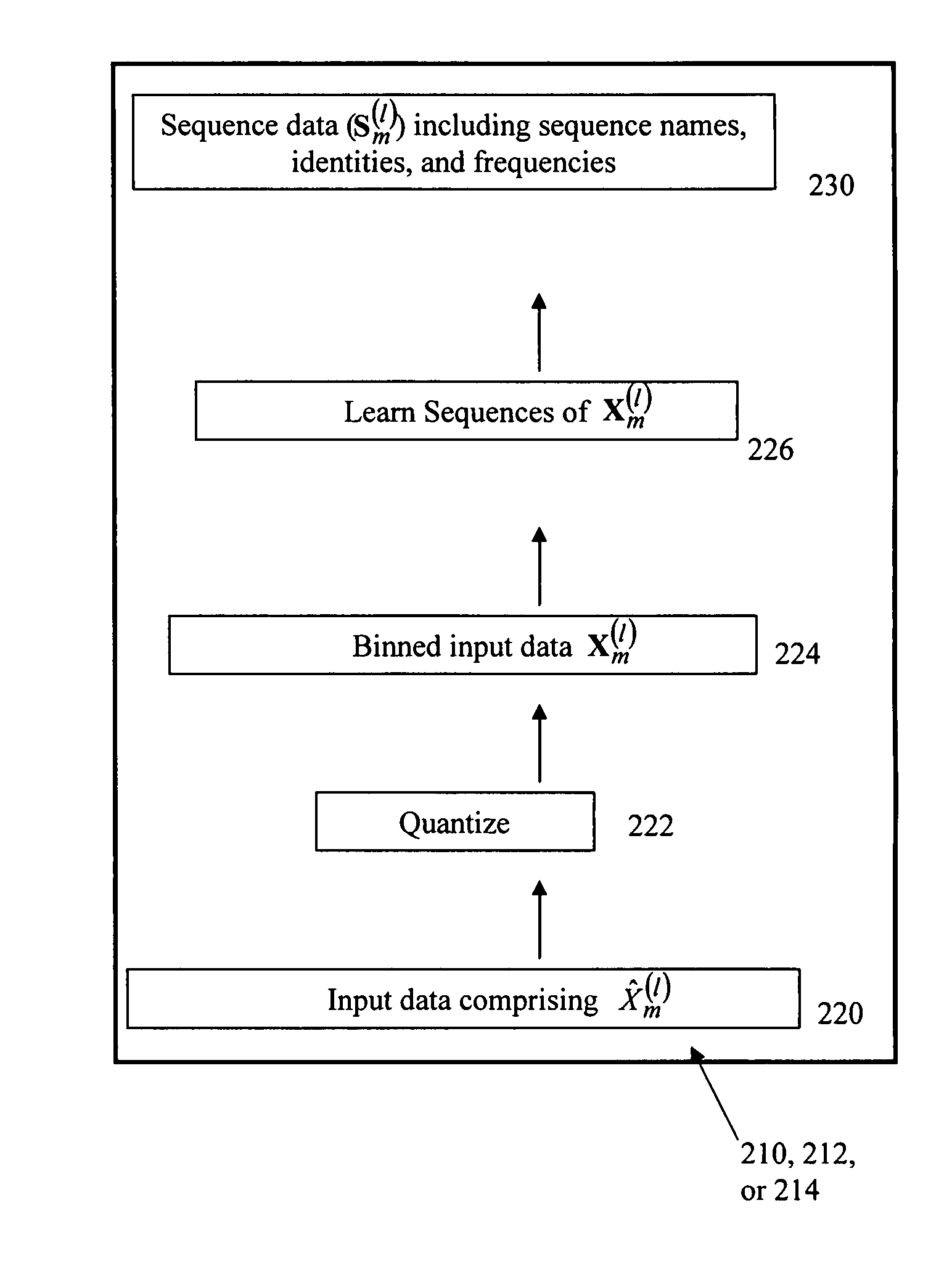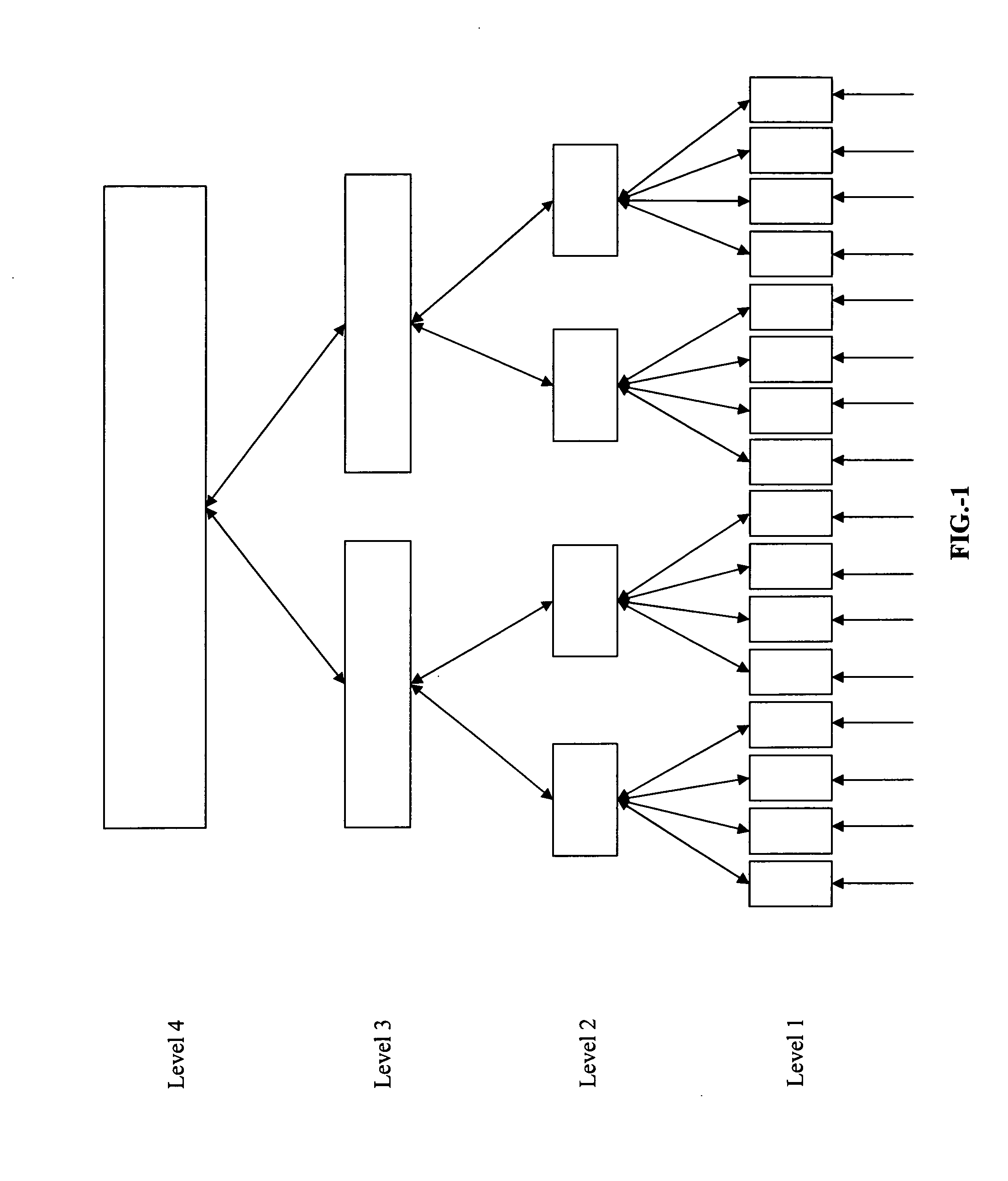Trainable hierarchical memory system and method
a hierarchical memory and memory system technology, applied in the field of machine learning, can solve the problems of inability to generalize well methods based on simple distance metrics, the current state of art in simple recognition of visually perceived objects, and the difficulty of computer vision algorithms
- Summary
- Abstract
- Description
- Claims
- Application Information
AI Technical Summary
Benefits of technology
Problems solved by technology
Method used
Image
Examples
example 1
Hierarchical Structure for Visual Processing
[0059] For sensory input, such as for example for visual perception, the Level 1 processing modules have small receptive fields compared to the size of the total image. These Level 1 processing modules receive their inputs from a small patch of the visual field. Several such Level 1 processing modules tile the visual field, possibly with overlap. A processing module at Level 2 is connected to and interchanges data with one or more adjoining processing modules in Level 1. Thus a Level 2 processing module covers more of the visual field compared to a Level 1 processing module. However, a Level 2 processing module receives sensory information only through a Level 1 processing module. In this embodiment, there is no direct sensory input to processing modules at Level 2 or higher. However, as discussed above, it is possible and may even e desirable to provide some direct sensory input data to modules at tiers above the lowest tier in the hiera...
example 2
Recognition as Inference in a Bayesian Network
[0068] Various embodiments of the present invention advantageously recognize the continuity of time and utilize temporal data to interpret and solve problems that other systems may encounter with varying observational representations of invariant aspects of the experienced environment. As an added advantage, the present invention also provides a Bayesian inference prediction framework that incorporates feedback from higher level modules in a hierarchical memory system to lower level modules. A memory or processing system and method in accordance with the present invention captures multiple temporal and spatial scales at the same time. This capability goes beyond the use of Hierarchical Hidden Markov Models (HHMMs) to capture structure at multiple scales either in space or in time. The invention may be applied to process data from visual, auditory, tactile and other sensory data as well as other types of previously recorded data.
[0069] ...
PUM
 Login to View More
Login to View More Abstract
Description
Claims
Application Information
 Login to View More
Login to View More - R&D
- Intellectual Property
- Life Sciences
- Materials
- Tech Scout
- Unparalleled Data Quality
- Higher Quality Content
- 60% Fewer Hallucinations
Browse by: Latest US Patents, China's latest patents, Technical Efficacy Thesaurus, Application Domain, Technology Topic, Popular Technical Reports.
© 2025 PatSnap. All rights reserved.Legal|Privacy policy|Modern Slavery Act Transparency Statement|Sitemap|About US| Contact US: help@patsnap.com



